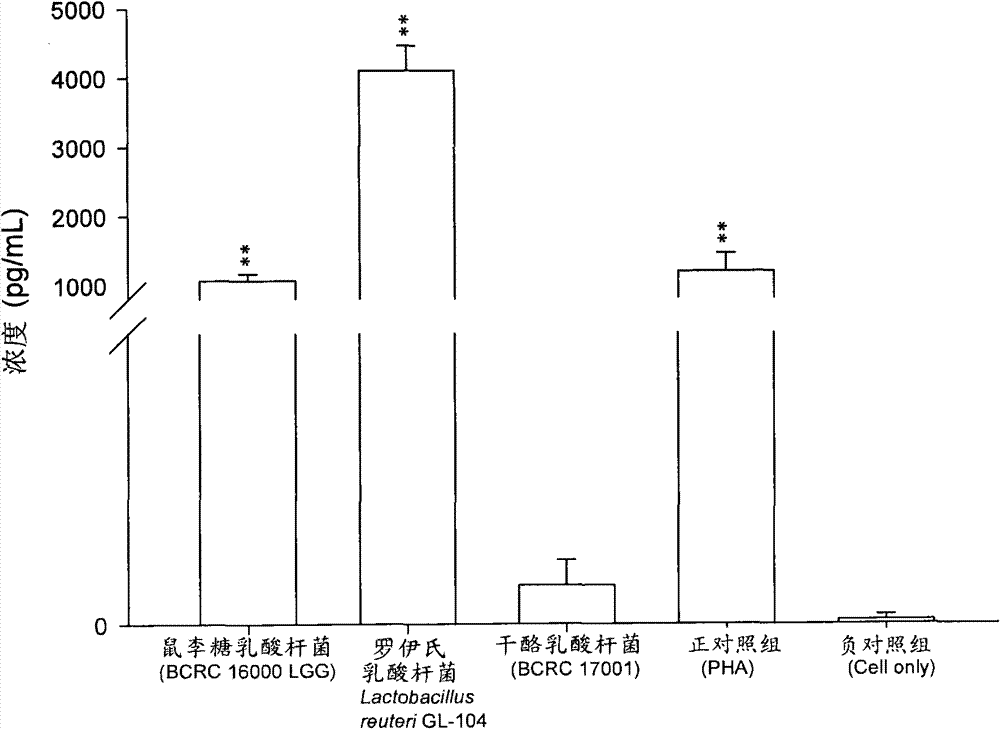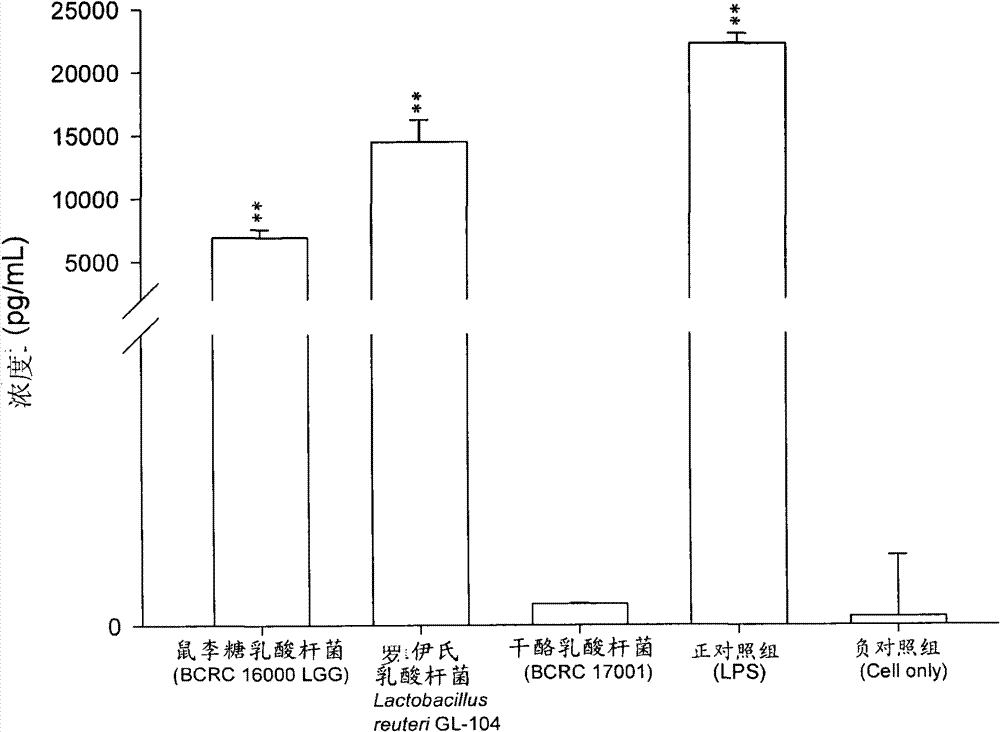Food composition and medicinal composition of lactobacillus strain for treating allergy
A pharmaceutical composition and composition technology, applied in the field of food composition and pharmaceutical composition
- Summary
- Abstract
- Description
- Claims
- Application Information
AI Technical Summary
Problems solved by technology
Method used
Image
Examples
Embodiment 1
[0023] According to the results of 16S rDNA sequence analysis and API bacterial identification system analysis, the taxonomic characteristics of the strains were confirmed. It was found that Fenghua strain number GL-104 is Lactobacillus reuteri. The characteristics of this strain are listed in Table 2 in detail in terms of morphology and general properties:
[0024] Table 2
[0025] strain name Morphological characteristics Lactobacillus reuteri GL-104 1. When cultured in MRS medium, the bacteria are in the shape of short rods with rounded ends, usually appearing alone, in pairs or in short chains. 2. Gram-positive bacilli do not produce spores, do not have catalase, oxidase and motility, and can grow in both aerobic and anaerobic environments. The most suitable growth temperature is 37±1°C, which belongs to facultative heterogeneity A fermentative strain that does not produce gas during glucose metabolism.
[0026] Example 2: The effect of anti-alle...
Embodiment 2
[0027] To examine the effect of the anti-allergic lactic acid bacteria strain, Lactobacillus reuteri GL-104 strain M 209138, on the Th1 type immunity enhancement effect, which is to measure the mouse spleen cells (Splenocyte) and human peripheral blood mononuclear cells (Peripheral blood mononuclear cell , PBMC) and the aforementioned strain of anti-allergic lactic acid bacteria were respectively co-cultured to measure the secretion of interferon gamma to verify the strain with anti-allergic ability. Use the following experimental procedure:
[0028] 1. Take an appropriate amount of mouse spleen and human blood, about one spleen and 200mL whole blood each time.
[0029] 2. Put the spleen into the buffer solution and crush it, centrifuge at 100g for 5 minutes, and take the supernatant for later use.
[0030] 3. Take an equal proportion of blood cell separation solution (Ficoll-paque), spleen cell supernatant and blood and centrifuge at 400g for 30-40 minutes at 18-20°C.
[00...
Embodiment 3
[0041] To examine the enhancement effect of the anti-allergic lactic acid bacteria strain of the present invention-Lactobacillus reuteri GL-104 strain M209138 on Th1-type immunity, it is determined that human dendritic cells (dendritic cells) are co-cultivated with the aforementioned anti-allergic lactic acid bacteria The secretion of interleukin 12p40 (IL-12p40) was measured to verify the strain with anti-allergic ability. Use the following experimental procedure:
[0042] 1. Draw an appropriate amount of human blood about 200mL each time.
[0043] 2. Take an equal proportion of Ficoll-paque and blood and centrifuge at 400g for 30-40 minutes at 18-20°C.
[0044] 3. Take the human peripheral blood mononuclear cell (PBMC) layer, wash the cells with buffer solution for 2-3 times, and suspend the cells with an appropriate medium (such as RPMI-1640).
[0045] 4. Human peripheral blood mononuclear cells (PBMC) cells were infected with CD14 + Microbeads (MiniMACSsystem) will CD14...
PUM
 Login to View More
Login to View More Abstract
Description
Claims
Application Information
 Login to View More
Login to View More - R&D
- Intellectual Property
- Life Sciences
- Materials
- Tech Scout
- Unparalleled Data Quality
- Higher Quality Content
- 60% Fewer Hallucinations
Browse by: Latest US Patents, China's latest patents, Technical Efficacy Thesaurus, Application Domain, Technology Topic, Popular Technical Reports.
© 2025 PatSnap. All rights reserved.Legal|Privacy policy|Modern Slavery Act Transparency Statement|Sitemap|About US| Contact US: help@patsnap.com



